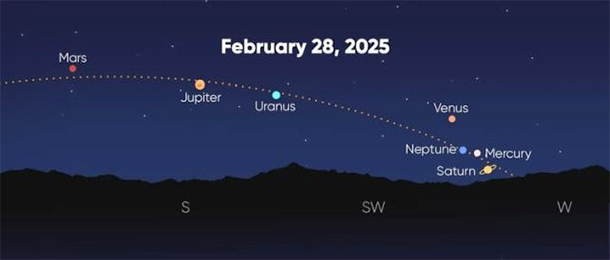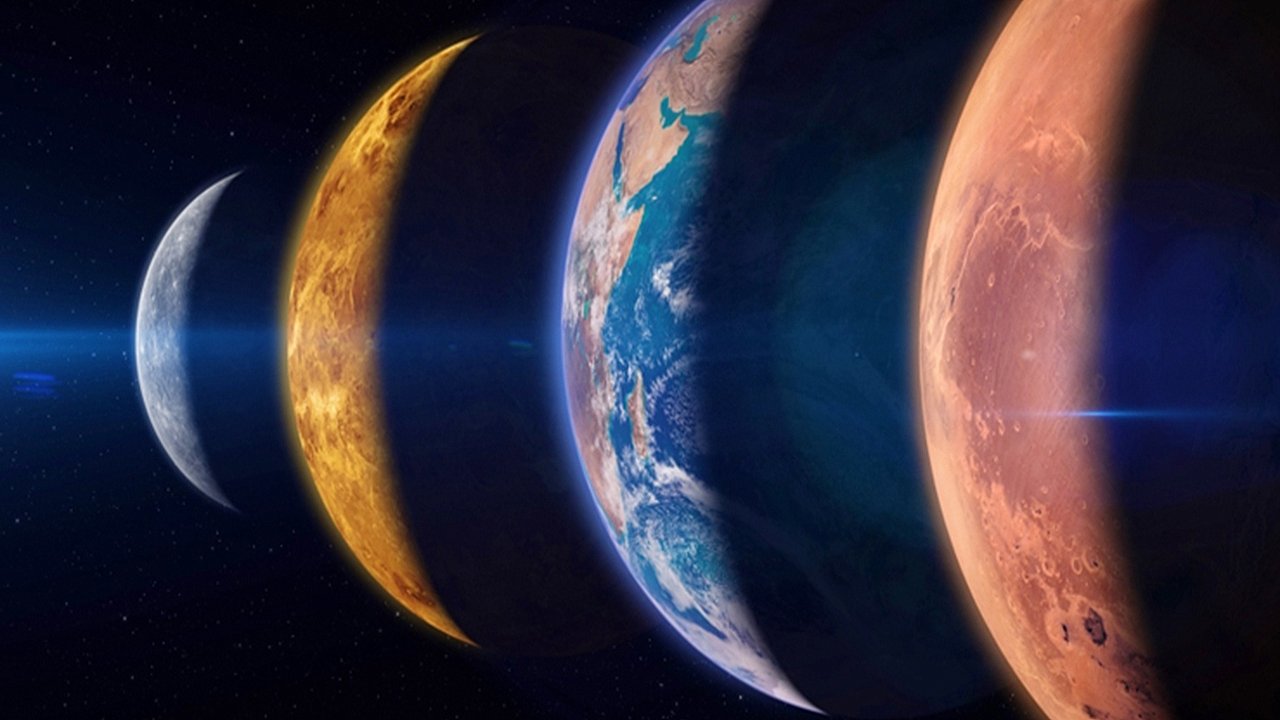While planetary alignments involving a few planets are fairly frequent, witnessing most or all planets aligning simultaneously is much less common. Any alignment featuring at least three planets qualifies as an astronomical alignment, while five-planet groupings are considered large alignments. However, alignments involving seven planets are among the rarest cosmic phenomena.Unlike the neat planetary formations often depicted in educational illustrations, the planets do not line up in a straight, orderly row in space. Instead, they appear arranged along an imaginary celestial arc, a result of the way planets orbit within the Solar System’s ecliptic plane. An illustration of the upcoming February planetary alignment as seen from the Northern Hemisphere. (Star Walk)
An illustration of the upcoming February planetary alignment as seen from the Northern Hemisphere. (Star Walk)
Why Do Planetary Alignments Happen?
The reason for these occasional alignments lies in the formation of planetary orbits. All planets in our Solar System move along a relatively flat, disk-like path around the Sun, known as the ecliptic plane. This occurs due to the way stars and their planetary systems form—as a rotating cloud of gas and dust collapses under gravity, it flattens into a disk. The planets emerge from this material and, unless influenced by other gravitational forces, continue to orbit in nearly the same plane for billions of years.Sometimes, due to the timing of their orbits, multiple planets end up positioned on the same side of the Sun simultaneously, making them visible together in the night sky. On February 28, this rare synchronization will allow observers to see seven planets in a single evening.How to View the Seven-Planet Alignment
Your ability to witness this extraordinary planetary lineup depends on your location, the time of night, and weather conditions. Here are some ways to ensure you get the best view:
 An illustration of the upcoming February planetary alignment as seen from the Northern Hemisphere. (Star Walk)
An illustration of the upcoming February planetary alignment as seen from the Northern Hemisphere. (Star Walk)Why Do Planetary Alignments Happen?
The reason for these occasional alignments lies in the formation of planetary orbits. All planets in our Solar System move along a relatively flat, disk-like path around the Sun, known as the ecliptic plane. This occurs due to the way stars and their planetary systems form—as a rotating cloud of gas and dust collapses under gravity, it flattens into a disk. The planets emerge from this material and, unless influenced by other gravitational forces, continue to orbit in nearly the same plane for billions of years.Sometimes, due to the timing of their orbits, multiple planets end up positioned on the same side of the Sun simultaneously, making them visible together in the night sky. On February 28, this rare synchronization will allow observers to see seven planets in a single evening.How to View the Seven-Planet Alignment
Your ability to witness this extraordinary planetary lineup depends on your location, the time of night, and weather conditions. Here are some ways to ensure you get the best view:
- Check planetary rise and set times – Online tools like Time and Date offer interactive charts that display the positions of the planets for any given date and location.
- Use planetarium software – Websites like Stellarium provide real-time planetary maps to help you find the alignment in your sky.
- Download mobile sky-watching apps – Apps such as Sky Tonight use your phone’s sensors to show the exact positions of celestial objects in real time.








